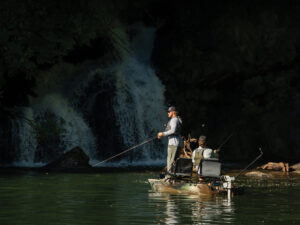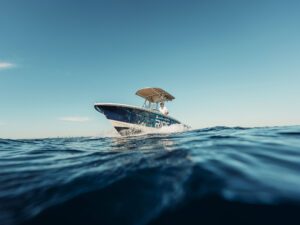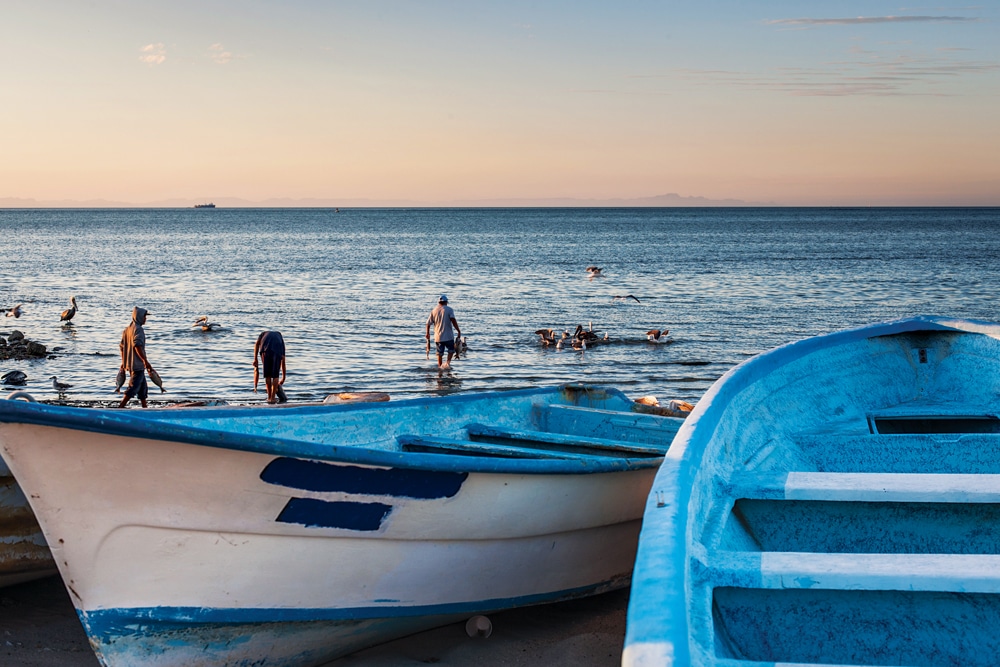
The History of the Panga
Our trip to the sea lion colony at Los Islotes was scrapped, a casualty of the roaring northwest winds that frequently tear up Mexico’s Gulf of California in winter. As the driver pointed our boat’s nose beyond Isla Espíritu Santo’s somewhat sheltered embrace, the full force of the snotty weather hit.
The San Lorenzo Channel erupted with confused, steep, breaking seas. Vision blurred from the barrage of salt spray; I could no longer see the island nor the Pichilingue Peninsula ahead.
I could see our driver, lips set in a thin line, with one gnarled hand firmly grasping the wheel and the other on the throttle. The engine screamed as he alternately throttled up and dialed back, deftly maneuvering the boat across the menacing channel. Some of my companions screwed their eyes shut, knuckles white as they grasped whatever handhold was nearby.
But the boat could handle the angry sea. It was, after all, a panga.
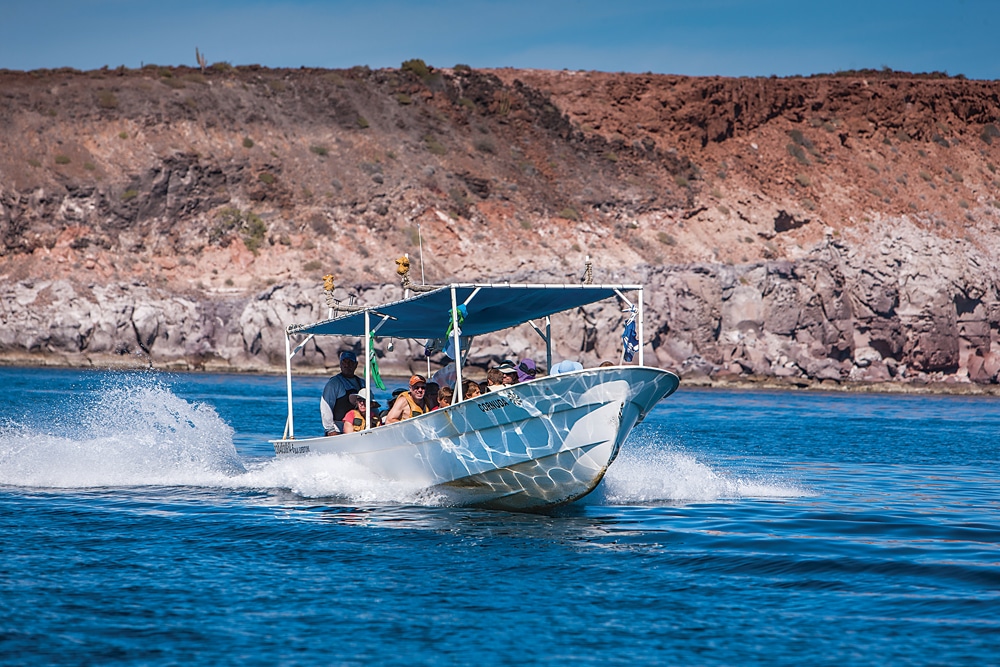
The History of the Panga
It was easy to fall in love with this nimble yet tough little workhorse, especially since a colorful fleet of pangas adorns the working waterfront in La Paz, Baja California Sur’s nearly 500-year-old capital city. Strolling the malecon one evening, we watched fishermen rinse off their catch and wade ashore to load it into trucks. We also saw brightly painted signs advertising a whale-shark trip aboard this boat or a dive excursion aboard that one. Pangas are busy here, and there’s no question that the vessel is deeply woven into the culture. But did it originate here?
Back home, I did a little digging. My search yielded a surprisingly small collection of articles that made brief references to a World Bank-funded Yamaha project four decades ago. I also discovered a labyrinthine series of online forum discussions among hard-core panga fans, all debating the boat’s true origins. This was curious. Was the panga the result of a worldwide Japanese engineering effort, or was it a product of its own environment? In either case, how did it come to change the world?
To find out, I had to return to La Paz.
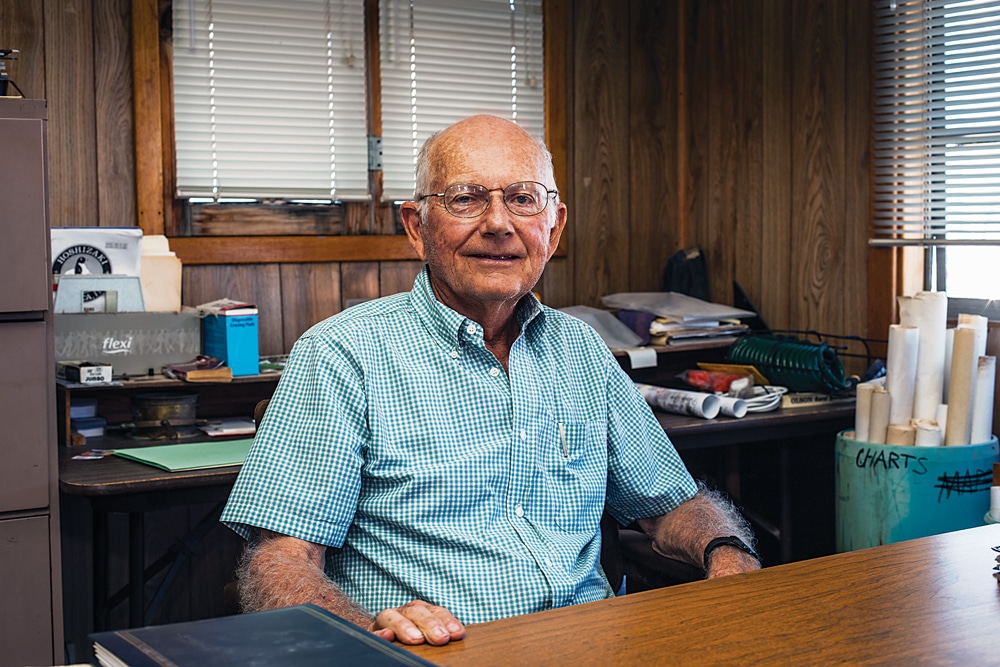
The History of the Panga
Meeting Mr. Panga
Today, Mac Shroyer owns and operates the bustling downtown Marina de La Paz with his wife and son. When the Shroyers first arrived in Baja California Sur in the 1960s, however, the marina business was not his first calling. Boats were.
“I pursued what interested me,” said Shroyer, who originally worked as a teacher in California. He and his family sailed the Sea of Cortez in a boat he built.
The Shroyers settled in La Paz, then a sleepy colonial city of just 35,000 people. When they arrived, fishermen along the coast were still plying local waters with plank-on-frame double-enders, introduced from the coastal town of Guaymas on the Mexican mainland in the 1950s, or little plywood variations of the boats, which had a transom and could carry a small outboard. The arrival of ferry service and construction of the 1,063-mile-long Transpeninsular Highway in remote Baja California Sur — which wasn’t even a Mexican state until 1978 — changed everything.
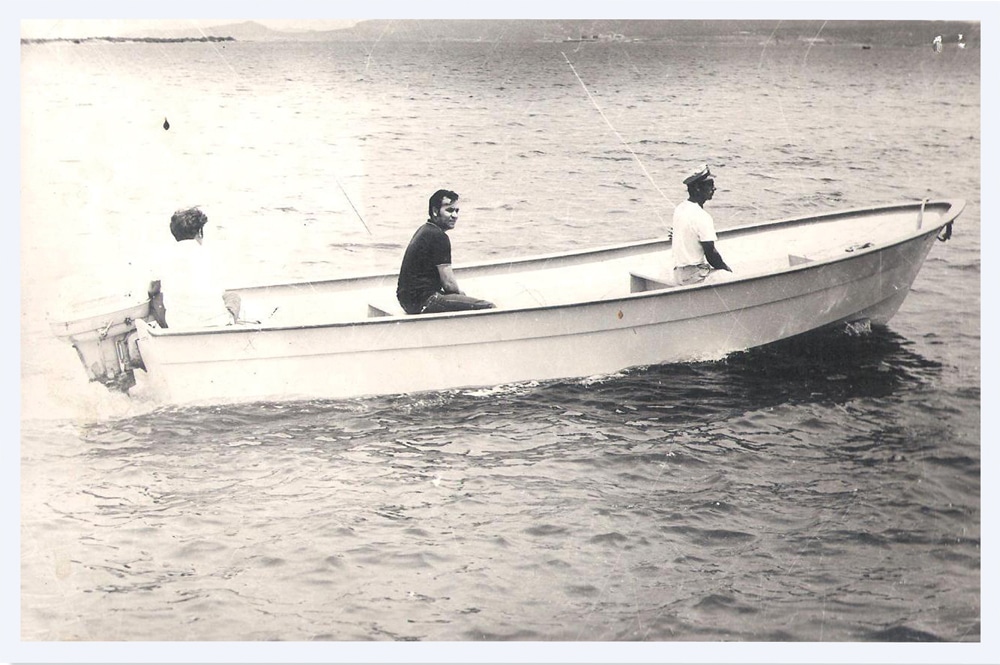
The History of the Panga
“All of a sudden there was a possibility that locally caught fish could be shipped on ice to the United States and mainland Mexico,” Shroyer said. The fishing cooperatives needed more substantial boats that could carry a 40 hp outboard.
Shroyer had been building small plywood sport-fishing boats near the La Paz waterfront, but he quickly shifted gears to fiberglass. When we met, he shuffled through myriad papers in his modest upstairs office, unearthing the piece he sought. It featured a 20-foot-4-inch boat with a beam of 6 feet 6 inches. Open, sleek and skinny, with a modified-V hull — innovative, yet bearing an unmistakable kinship with existing local craft, it had a slender shape, a notched transom and a rounded bottom.
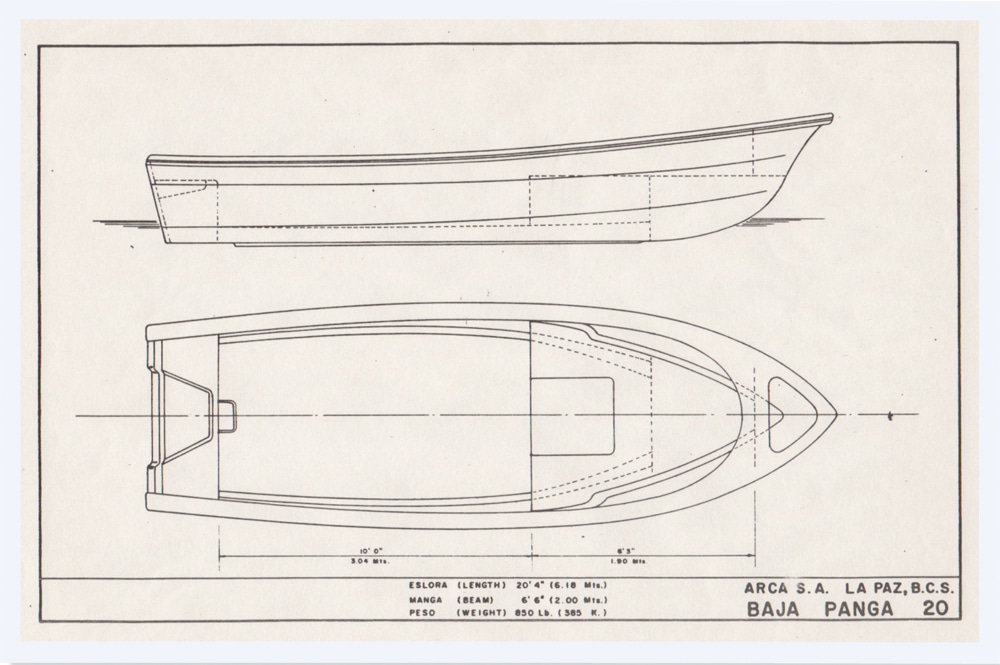
The History of the Panga
“First I made a mold for a 22,” he said. “I put a couple of banco [plank] seats across and air chambers fore and aft. Then I cut it off so I could make it a 20-footer.”
He estimated that he drew the lines in 1968, with the first boat in production at his building business, Embarcaciones Bajacalifornianos, in 1969-70. And it was the right boat for the right time, particularly since U.S.-built fiberglass fishing boats didn’t suit local conditions.
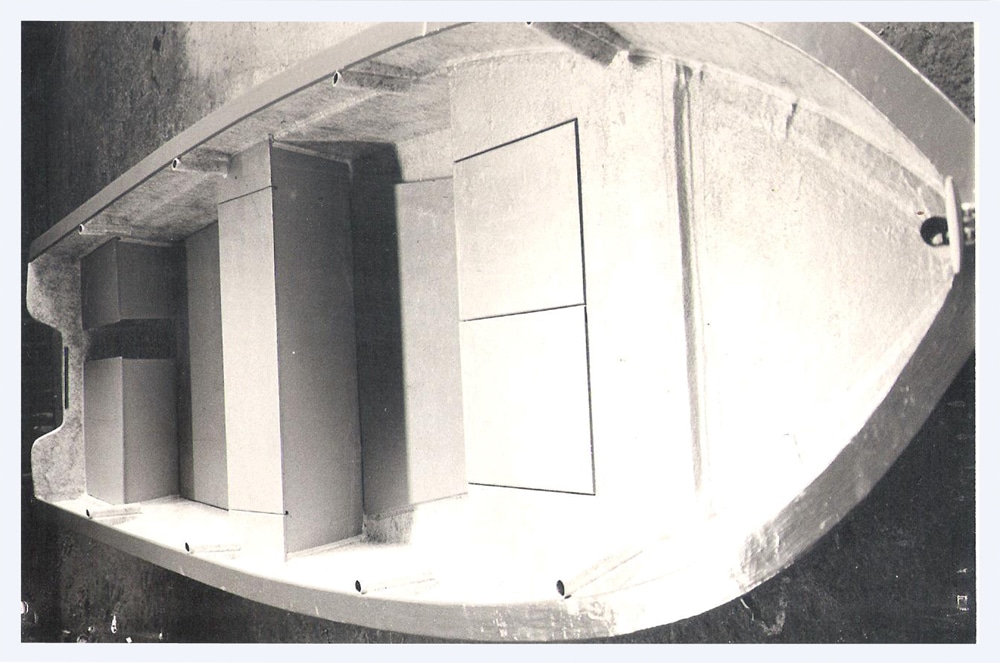
The History of the Panga
The panga was simple — no inside floor, no cockpit, no extraneous beauty marks — but it was efficient and cost-effective, and it had superior handling and carrying capacity. A couple of guys with nets and longlines could go through the surf, travel 40 or 50 miles and bring back a sizable load in a boat that would handle properly. It’s stable, seakindly and very safe.
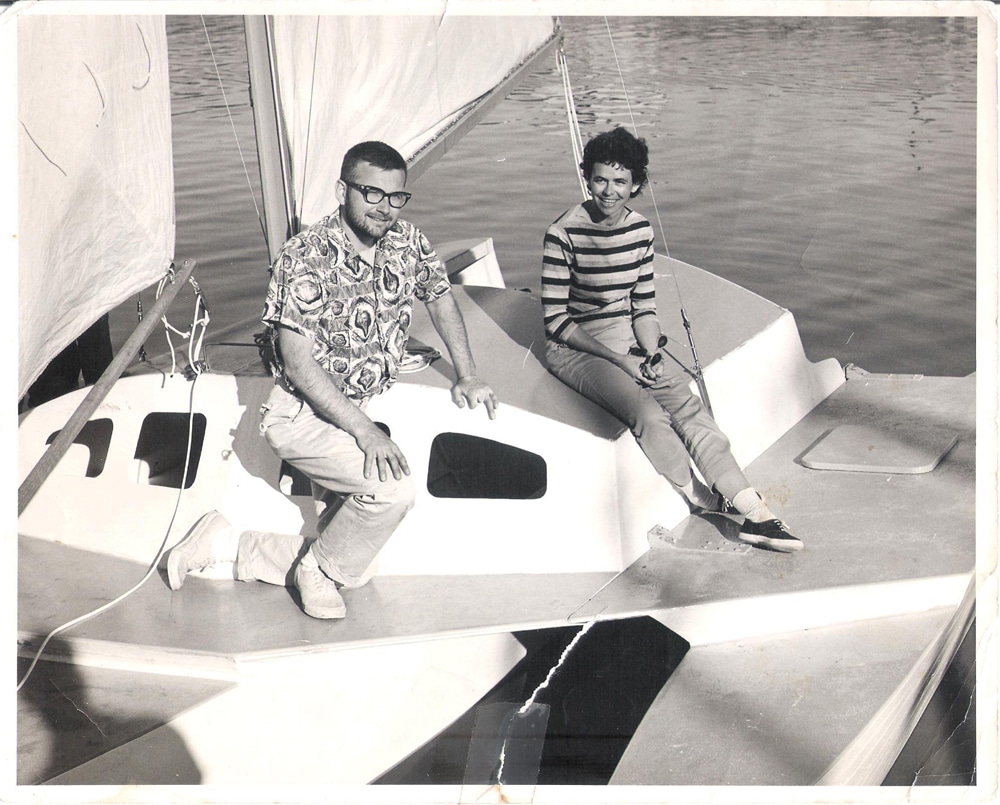
The History of the Panga
With the panga, fishermen on the Baja Peninsula’s west coast could even surf through the Pacific swells onto the beach, nose up. Then the men on shore could quickly pull the boat up onto the beach, preventing the next wave from hitting it.
This fiberglass panga, Shroyer said, was the first to be designed and built, and it was unique to the area. But was it?
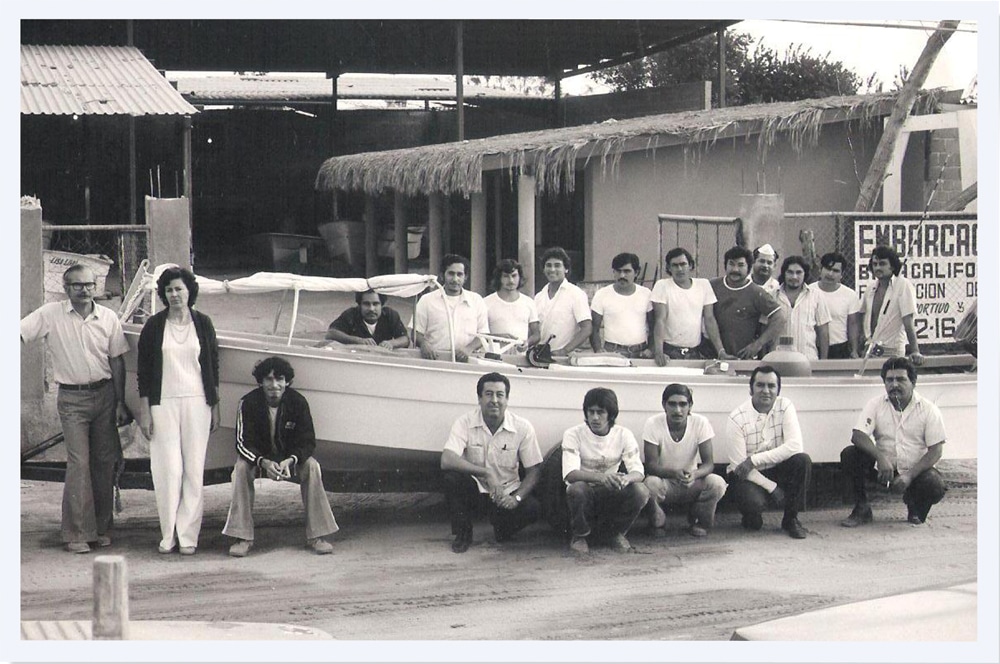
The History of the Panga
The Yamaha Debate
When asked if Yamaha was actually responsible for the first fiberglass pangas, Shroyer shook his head.
“It was the other way around,” he said emphatically. “We did it here first.”
In the 1970s, Mexican President Luis Echeverría authorized the building of pangas throughout the country. The World Bank financed the project, and Yamaha partnered with Mexican builders, including well-known Imensa in Mexico City, to produce the boats. The Japanese company provided engines, of course, as well as its own engineering expertise.
There is no question that, around this time, Yamaha’s manufacturers also got into the panga business. “They built stacks of pangas to sell motors,” Shroyer said. “Their project worked fairly well, but the Japanese version had a big, bulky gunwale and foam for flotation. Most of the boats ended up on the east coast of Mexico.”
The Japanese panga differed in that it was 22 feet long with a 5½-foot beam with a more rounded, rising bow — as Shroyer noted. It also had a flatter transom and a Delta pad underneath to help it ride on top of chop and to make it easier to beach. In Asia, these boats were even called Yamahas.
Yamaha advocates contend that the company took inspiration from traditional surf-fishing boats all over the world and distributed the plans to local builders (such as Shroyer) so they could make their own versions. Yet Shroyer’s plans are clearly of his own hand.
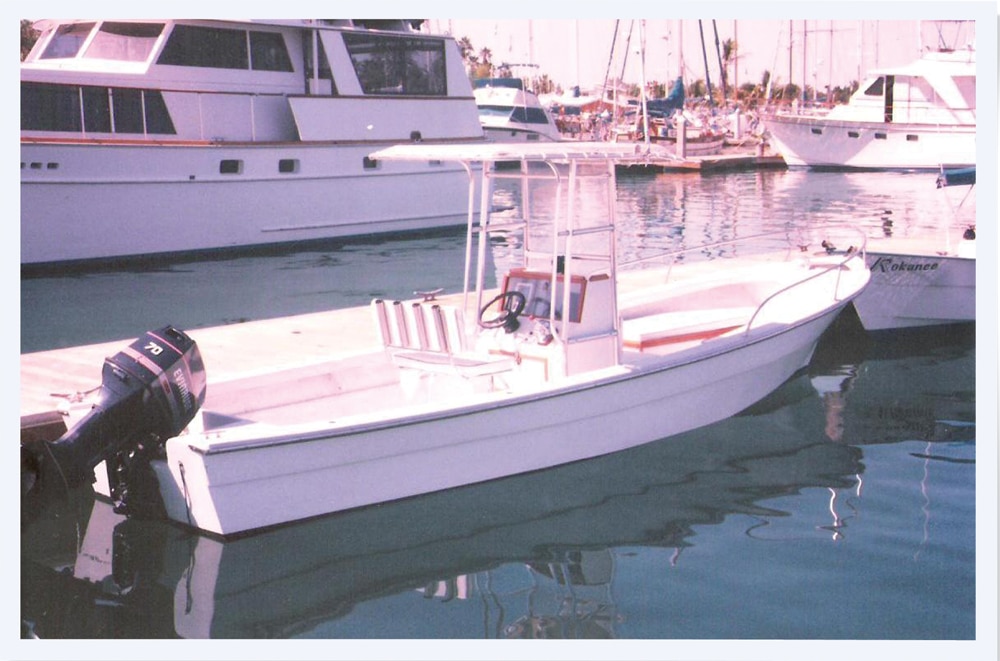
The History of the Panga
Later, I contacted Rob McDaniel at Sarasota, Florida-based Panga Marine for his take on panga history. Three decades ago, McDaniel became acquainted with Mexican pangas while vacationing and fishing in the Yucatán. He has been building his pangas stateside since 2005. When I told him about my search to find the first fiberglass panga, he told me that a librarian friend had dug deeply into the history of the World Bank project to see if she could confirm any specifics.
“She didn’t find anything,” he mused. “I know Yamaha had early participation in the project, shopping around and forming partnerships with local boatbuilders.”
Shroyer was not a Yamaha partner, so was it possible that he developed the La Paz panga independent of the World Bank project?
“I think so,” McDaniel said thoughtfully. “Both the stories might be true.”
As the 1970s marched on, and as Yamaha pursued its partnerships with builders elsewhere in Mexico, Shroyer continued producing pangas for local collectives. He produced approximately 3,000 pangas until 1982, when the devaluation of the peso spelled the end. Shroyer gave the molds to his employees, who are still building pangas in some form to this day.
Enthusiasts will continue to debate who was first on a global scale, but either way, there is no doubt Mac Shroyer is a major figure in building the boats that changed the world.
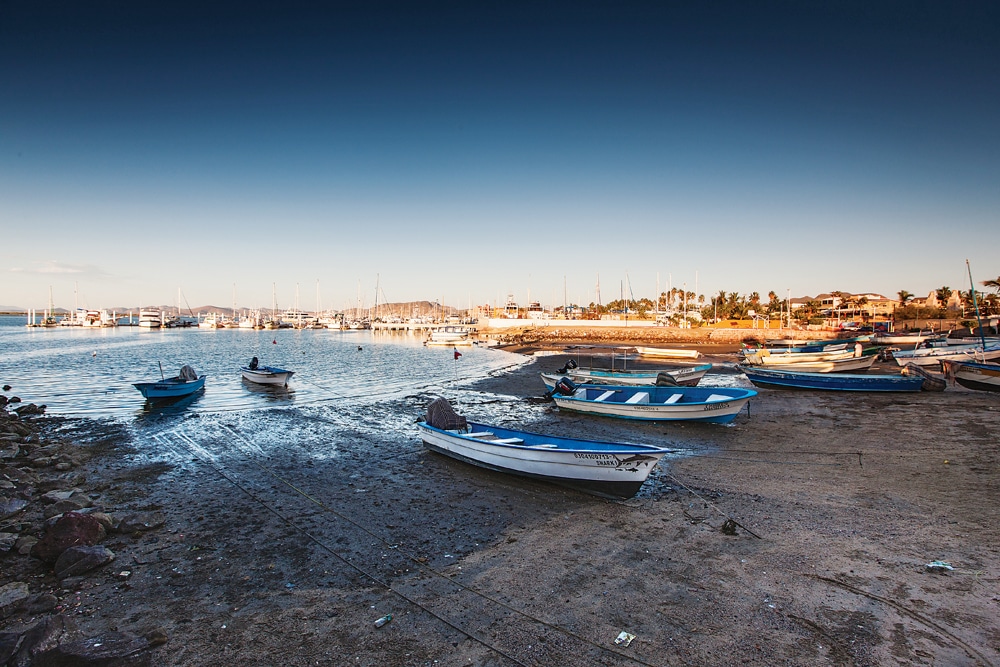
The History of the Panga
Why Pangas Matter
So, really, what’s the big deal about pangas anyway? To find out I met with Fermín Reygadas, a professor at the Universidad Autónoma de Baja California Sur. Reygadas’ main area of research is the archaeology and anthropology of Baja California Sur, and his specialties are the vanished Pericú people and the peninsula’s enduring ranchero culture.
He brought me back a few centuries to Chiapas, where locals built canoelike boats called cayucos that allowed the native people to transport goods. The boats featured lateen sails to speed the travelers across the sea, and they quickly became critical lifelines — particularly in La Paz after it became the main center of commerce for miners and ranchers. It also became ground zero for the pearling boom in the 18th and 19th centuries.
“People who came to dive for pearls would use the sailing boat as a platform and small rafts for the divers,” Reygadas said. “That sailing boat was the ancestor of the panga.”
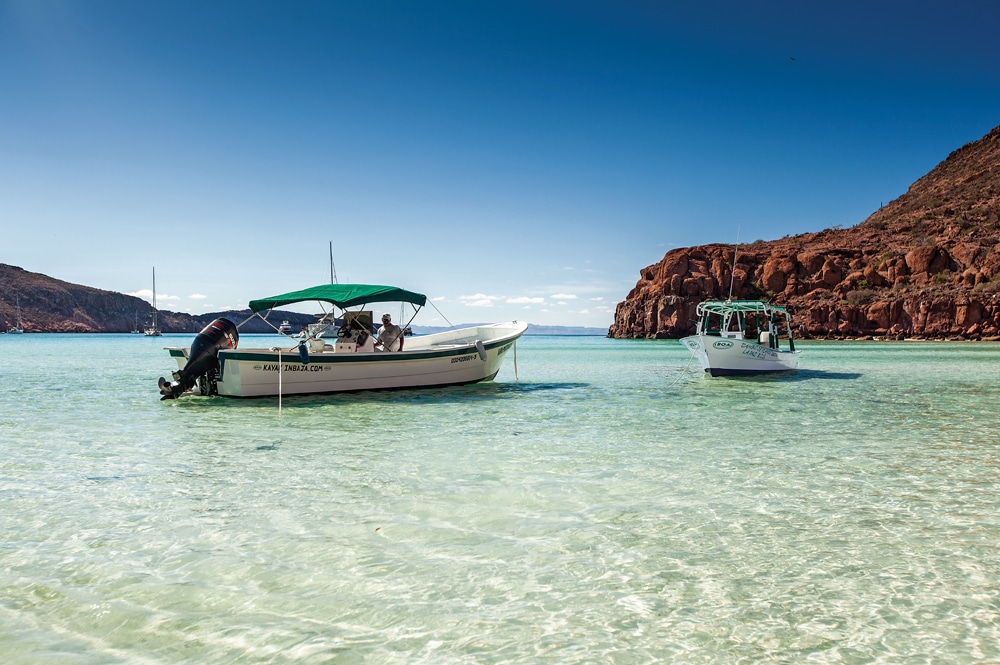
The History of the Panga
Here’s how modern fiberglass pangas changed the world: They could be mass-produced quickly and cheaply from molds rather than crafted from wood, were incredibly durable and could handle an outboard engine — like the 40 hp one that Yamaha happened to be marketing to indigenous commercial fishermen around the world. Pangas could run in all kinds of conditions, and the large bow worked great for hauling nets. With cheap boats and power, local fishermen could run farther and faster to bring their fish to market, changing the local economies of coastal areas around the world. Places like La Paz.
Today, the panga is changing the world in a different way, as we saw on our sea lion trip. In La Paz and all over the world, the panga is now the boat that drives the tourism industry. The sturdy little boats are carrying anglers, sea kayakers, divers, snorkelers and whale-watchers — and all the requisite gear.
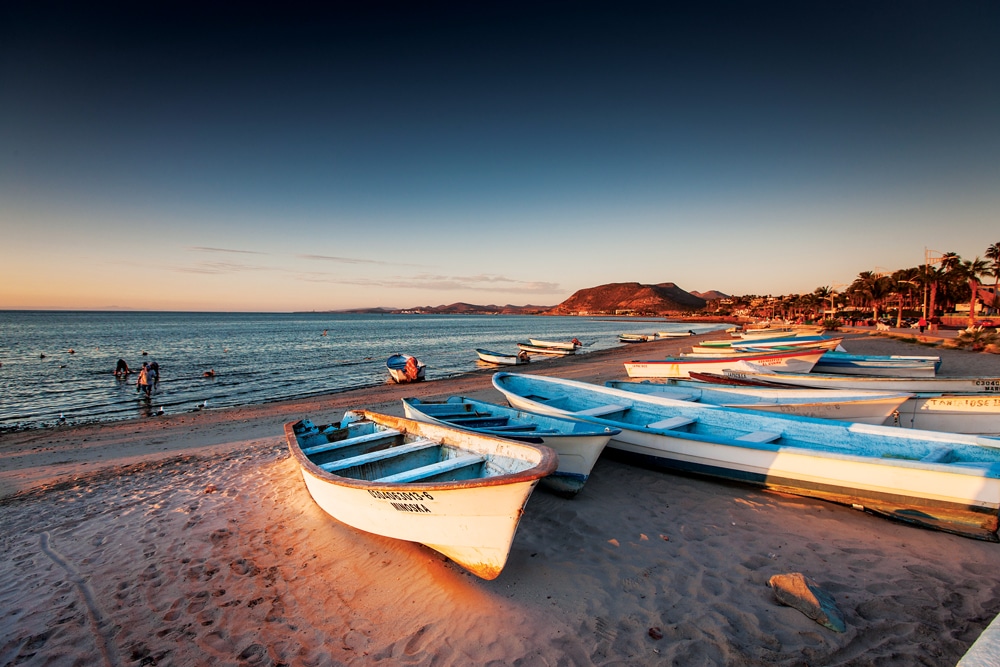
The History of the Panga
Ben Gillam, owner of La Paz outfitter Baja Outdoor Activities, recognizes the pangas’ usefulness. “We have three pangas, all of which have 200-horsepower, four-stroke engines or bigger for high-speed transfers to the island,” Gillam said. “A traditional panga is suitable for running right up on the beach, so it’s ideal as our support vessel for loading and unloading expedition gear. Even under heavy load, they draw very little water, allowing for entry into all the shallow bays.”
The ecotourism boom and the ability of the panga to help support it ensured that the local population, including ex-fishermen, had a new way to make a living.
How fitting: From its pearl-diving ancestry to Mac Shroyer’s fiberglass panga, this versatile, unstoppable boat has once again saved the day.

